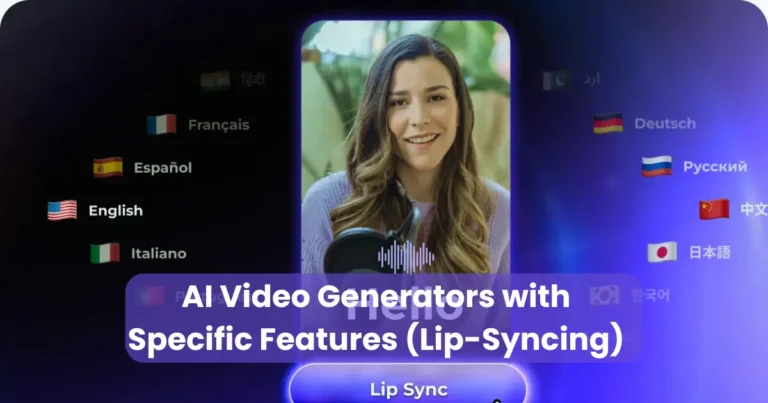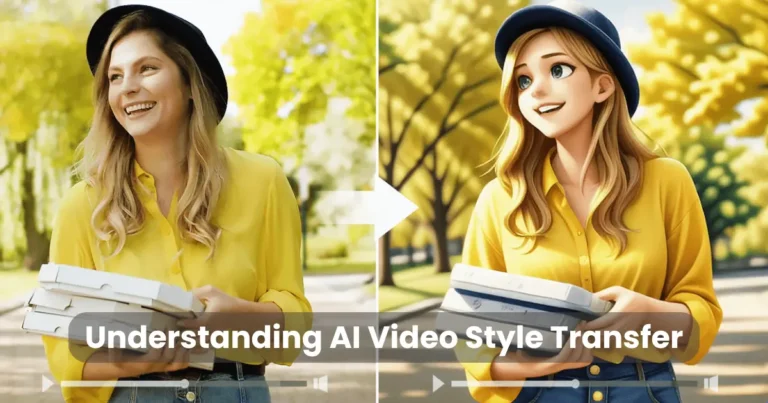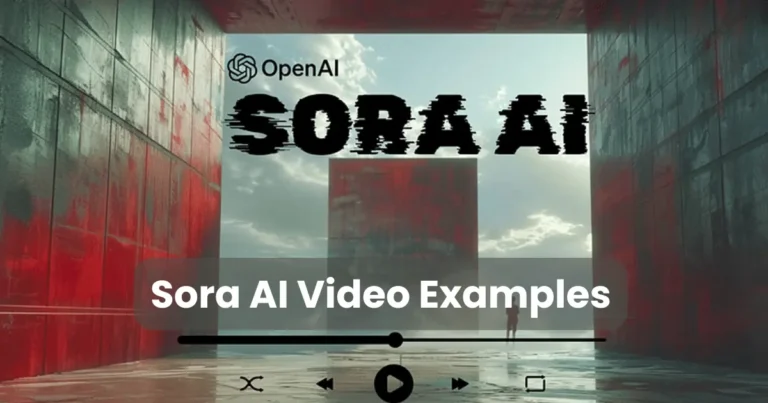AI-Powered Social Media Ads: Transforming Digital Marketing

Contents
- 1 How AI is Revolutionizing Social Media Advertising
- 2 Benefits of AI-Powered Social Media Ads
- 3 AI Tools for Social Media Advertising
- 4 Best Practices for AI-Powered Social Media Ads
- 5 Future Trends in AI-Powered Social Media Advertising
- 5.1 1. AI-Generated Ad Content
- 5.2 2. Hyper-Personalization with Predictive Analytics
- 5.3 3. Conversational AI and Chatbot Advertising
- 5.4 4. Voice and AI-Powered Search Ads
- 5.5 5. Ethical AI and Privacy-First Advertising
- 5.6 6. Augmented Reality (AR) and AI-Powered Ads
- 5.7 7. Autonomous AI Ad Campaigns
- 5.8 Conclusion
The digital advertising landscape has been significantly transformed by AI-powered social media ads. Businesses can now optimize their ad campaigns with minimal manual effort, allowing for improved targeting, cost efficiency, and enhanced engagement. Through artificial intelligence, social media platforms analyze vast amounts of data, making real-time adjustments to improve ad performance. As AI technology continues to advance, advertisers must understand its impact and leverage its capabilities for maximum results.
How AI is Revolutionizing Social Media Advertising
Artificial intelligence is reshaping the way businesses create, manage, and optimize social media ads. By automating processes and analyzing vast amounts of data, AI ensures that advertisements are more targeted, engaging, and cost-effective. Several key areas highlight the transformative role of AI in social media advertising.
Automated Ad Creation
AI-powered tools generate high-performing ad creatives, headlines, and descriptions based on user engagement data. By analyzing past campaign performance, AI suggests the best ad formats, visuals, and copy, eliminating the need for manual content creation. As a result, businesses can quickly launch ads that are optimized for conversions.
AI-Driven Audience Targeting
With the help of machine learning, AI identifies ideal target audiences based on demographics, interests, online behavior, and purchasing history. By continuously analyzing engagement patterns, AI ensures that ads reach users who are most likely to take action, thereby improving click-through rates and return on ad spend.
Performance Optimization with Machine Learning
AI continuously monitors campaign performance and makes data-driven adjustments in real time. Factors such as bid amounts, ad placements, and audience segmentation are automatically optimized to maximize results. By reducing wasted ad spend and enhancing targeting precision, businesses can achieve higher engagement and conversions with minimal manual intervention.
AI-powered social media ads have revolutionized digital marketing by automating tasks, improving efficiency, and enhancing ad performance. As technology advances, its role in social media advertising will continue to expand, offering businesses smarter and more cost-effective advertising solutions.
Benefits of AI-Powered Social Media Ads
Integrating artificial intelligence into social media advertising has revolutionized the way businesses connect with their target audiences. AI-powered social media ads offer multiple advantages that enhance efficiency, engagement, and return on investment (ROI).

1. Enhanced Efficiency and Cost Savings
AI automates various aspects of ad management, such as audience targeting, bidding strategies, and content generation. This automation reduces manual effort, minimizes human error, and saves businesses both time and money. Since AI optimizes ad performance in real time, companies can allocate their budgets more effectively and reduce wasted ad spend.
2. Improved Personalization and Engagement
AI analyzes user behavior, preferences, and past interactions to create highly personalized ads. By delivering tailored content to the right audience at the right time, AI-powered social media ads increase engagement rates. Personalized ads resonate more with users, leading to higher click-through rates (CTR), improved conversions, and stronger customer relationships.
3. Real-Time Analytics and Insights
AI provides real-time data on ad performance, allowing businesses to make informed decisions instantly. By analyzing key performance metrics such as impressions, conversions, and user engagement, AI helps marketers refine their strategies for better results. Unlike traditional advertising methods, where insights are gathered after campaigns end, AI-powered ads adapt and improve continuously.
4. Better ROI and Ad Performance Optimization
Machine learning algorithms assess campaign performance and make automatic adjustments to improve ROI. AI optimizes ad placements, adjusts bids, and refines audience targeting, ensuring that ads perform at their best. As a result, businesses can achieve higher returns with lower costs.
5. Scalability and Adaptability
AI-powered advertising platforms can handle large volumes of data and scale ad campaigns effortlessly. Whether a business is running a local or global campaign, AI can adapt to different audience segments, market trends, and advertising goals. This scalability enables businesses of all sizes to compete effectively in the digital marketplace.
AI-powered social media ads provide businesses with smarter, data-driven solutions that improve efficiency, personalization, and overall ad performance. By leveraging AI, companies can stay ahead of the competition and maximize the impact of their social media marketing efforts.
AI Tools for Social Media Advertising
Several AI-powered tools have been developed to help businesses automate, optimize, and enhance their social media advertising strategies. These tools leverage artificial intelligence to improve audience targeting, content creation, and ad performance, making digital marketing more efficient and effective.

1. Meta Advantage+ (Facebook & Instagram Ads)
Meta’s AI-powered advertising tool, Advantage+, automates ad creation, audience targeting, and budget allocation. It analyzes past campaign data and user behavior to optimize ad placements across Facebook and Instagram, ensuring higher engagement and better ROI.
2. Google Performance Max
Google’s Performance Max utilizes AI to automate ad placements across Google’s platforms, including YouTube, Search, Display, and Gmail. By using machine learning, it identifies high-converting audience segments and adjusts bids in real-time for maximum effectiveness.
3. Adzooma
Adzooma is an AI-powered ad management platform that optimizes campaigns on Facebook, Google Ads, and Microsoft Ads. It provides automated recommendations, performance tracking, and AI-driven insights to help businesses enhance their ad strategies with minimal effort.
4. Smartly.io
Smartly.io is a powerful AI-based advertising tool designed for large-scale ad automation. It allows businesses to create, test, and optimize ads across multiple platforms, including Facebook, Instagram, and TikTok. Its predictive analytics feature ensures that ads are tailored for maximum engagement.
5. Phrasee
Phrasee uses AI-driven natural language generation (NLG) to optimize ad copy, email marketing, and social media content. By analyzing audience preferences, it creates compelling and high-converting ad messages that align with brand tone and user engagement trends.
6. Persado
Persado is another AI-driven tool that specializes in emotional intelligence for ad copy generation. By analyzing user sentiment and behavior, it crafts personalized and emotionally resonant social media ads, improving response rates and conversions.
7. Canva Magic Studio
For businesses focused on creative content, Canva’s Magic Studio offers AI-generated design and video creation features. This tool simplifies the ad design process by providing AI-powered templates, automatic resizing, and branding customization.
Choosing the Right AI Tool
Selecting the right AI tool depends on business goals, budget, and advertising platform preferences. Businesses should consider:
- Automation Capabilities – How well the tool automates ad management and optimization.
- Audience Targeting Features – The ability to segment and personalize audience groups.
- Integration with Platforms – Compatibility with social media and digital ad networks.
- Cost & Scalability – Pricing plans and suitability for business size and ad spend.
AI-powered tools are transforming social media advertising by automating key processes, improving ad performance, and reducing marketing costs. Businesses that leverage these tools can maximize their digital marketing success with minimal effort.
Best Practices for AI-Powered Social Media Ads
To maximize the effectiveness of AI-powered social media ads, businesses must adopt strategic best practices. AI automation enhances targeting, content creation, and ad optimization, but human oversight remains essential for achieving the best results.

1. Set Clear Campaign Goals
Before launching an AI-powered ad campaign, defining specific objectives is crucial. Whether the goal is brand awareness, lead generation, website traffic, or conversions, AI tools perform better when clear parameters are set. This ensures that the AI optimizes ad delivery based on the desired outcomes.
2. Choose the Right AI Tool
Selecting the appropriate AI advertising tool depends on business needs, target audience, and platform preferences. Tools like Meta Advantage+ (for Facebook and Instagram), Google Performance Max (for multi-channel ads), and Smartly.io (for large-scale automation) cater to different advertising strategies. Conducting A/B testing with multiple tools can help determine the best fit.
3. Optimize Audience Targeting
AI continuously refines audience segmentation based on user behavior, demographics, and engagement patterns. However, businesses should:
- Define primary and secondary target audiences.
- Use AI-driven lookalike audiences for broader reach.
- Exclude irrelevant audience segments to prevent wasted ad spend.
4. Leverage AI-Generated Content and Creativity
AI tools like Phrasee and Persado generate optimized ad copy, while Canva Magic Studio assists in creating visually appealing ads. To ensure high-performing content:
- Test AI-generated ad copy variations.
- Use dynamic creatives to personalize content for different audiences.
- Maintain brand consistency while experimenting with AI-generated content.
5. Monitor Ad Performance and Make Adjustments
AI provides real-time insights, but human intervention is necessary to fine-tune campaigns. Regularly reviewing ad performance metrics such as CTR (click-through rate), CPC (cost per click), and ROAS (return on ad spend) ensures continued optimization. Businesses should:
- Analyze AI-generated performance reports.
- Adjust targeting, budgets, and creatives as needed.
- Conduct A/B tests to compare AI recommendations with manual strategies.
6. Use AI for Budget Optimization
AI-powered ads automatically adjust bidding strategies to maximize ROI. Features like Google Smart Bidding and Facebook Automated Rules help allocate budget efficiently. To optimize ad spending:
- Set budget caps to prevent overspending.
- Enable AI-driven bid adjustments for better cost efficiency.
- Reallocate budget based on high-performing ad segments.
7. Stay Updated with AI Trends and Ethical Considerations
As AI technology evolves, staying informed about new features, algorithm updates, and ethical concerns is essential. Issues such as data privacy, algorithm bias, and AI transparency should be monitored to ensure responsible advertising.
By following these best practices, businesses can harness the full potential of AI-powered social media ads while maintaining control over their campaigns. AI enhances efficiency, but human oversight ensures the best results.
Future Trends in AI-Powered Social Media Advertising
The evolution of AI-powered social media ads is shaping the future of digital marketing. As artificial intelligence continues to advance, businesses must adapt to new trends that enhance ad performance, personalization, and user experience. Below are the key future trends expected to define AI-driven social media advertising.

1. AI-Generated Ad Content
AI is becoming more sophisticated in creating high-quality ad content, including text, images, and videos. Tools like ChatGPT, Midjourney, and Canva Magic Studio are already generating ad copies, visuals, and video scripts. In the future:
- AI will generate hyper-personalized ad creatives in real time.
- Video ads will be automatically edited and optimized for engagement.
- AI-driven storytelling will make brand messaging more compelling.
2. Hyper-Personalization with Predictive Analytics
AI will move beyond basic personalization to hyper-personalization, using real-time behavioral data and predictive analytics to craft ads tailored to individual users. This trend will enable:
- AI to anticipate user needs and serve relevant ads at the perfect moment.
- Dynamic product recommendations based on browsing and purchasing history.
- Real-time ad customization based on user emotions and interactions.
3. Conversational AI and Chatbot Advertising
Social media platforms are integrating AI-powered chatbots into advertising strategies. These bots will:
- Engage with users directly in the ad experience.
- Answer product-related queries in real time.
- Guide users through the sales funnel without requiring human intervention.
4. Voice and AI-Powered Search Ads
With the rise of voice search and virtual assistants like Alexa and Google Assistant, AI-driven voice-based social media ads will become more common. Future advancements will allow:
- AI to optimize social media ads for voice search queries.
- Voice-responsive ad interactions within platforms like Instagram and TikTok.
- Seamless integration of voice commands for purchasing products directly from ads.
5. Ethical AI and Privacy-First Advertising
As AI takes a more dominant role in advertising, ethical AI usage and data privacy will become a priority. Businesses must address:
- AI bias and fairness in ad targeting.
- Compliance with stricter privacy regulations like GDPR and CCPA.
- Transparent AI decision-making to maintain consumer trust.
6. Augmented Reality (AR) and AI-Powered Ads
AI and AR will merge to create immersive advertising experiences. Social media platforms like Instagram and Snapchat already support AR ads, but future innovations will include:
- AI-enhanced AR try-on experiences for products like fashion and beauty.
- Interactive 3D ads that allow users to engage with products virtually.
- AI-powered real-time adjustments to AR ad experiences based on user reactions.
7. Autonomous AI Ad Campaigns
AI will evolve to fully autonomous ad management, where campaigns are created, optimized, and scaled with minimal human intervention. These AI systems will:
- Self-adjust based on real-time engagement and performance data.
- Continuously learn from previous campaigns to improve future ad strategies.
- Automatically test and refine ad creatives, audiences, and placements.
AI-powered social media advertising is evolving rapidly, with a strong focus on automation, personalization, and ethical considerations. Businesses that embrace these future trends will gain a competitive edge by delivering more engaging, data-driven, and user-friendly ad experiences. Staying ahead of AI advancements will be crucial for brands looking to maximize their digital marketing impact.
Conclusion
The rise of AI-powered social media ads has transformed digital marketing, making advertising more efficient, data-driven, and personalized. By leveraging AI, businesses can automate ad creation, optimize audience targeting, and maximize return on investment with minimal effort. Advanced machine learning algorithms continuously refine campaigns, ensuring that ads reach the right people at the right time.
As AI technology continues to evolve, future trends such as hyper-personalization, AI-generated ad content, conversational chatbots, and augmented reality advertising will further enhance user engagement and ad effectiveness. However, businesses must also prioritize ethical AI usage, data privacy, and transparent ad practices to maintain consumer trust.
By integrating AI-powered tools and following best practices, brands can stay ahead in the competitive digital landscape. As social media advertising becomes increasingly AI-driven, those who embrace these innovations will achieve greater marketing success and long-term business growth.






